Then and Now: Photography of Laurel Hill East
Share
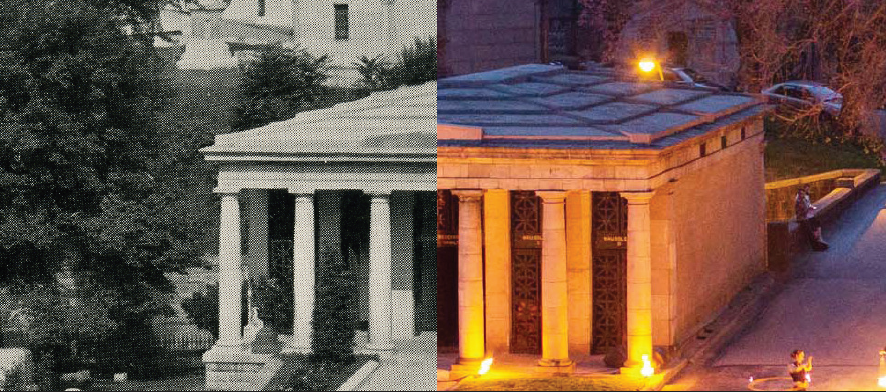
You may not have heard the term “Then and Now Photography”, but you have certainly seen it. An old photograph of a place is held up to align with the current view. In one glimpse you can see what it looked like then and what it looks like now.
One afternoon, volunteer Russ Dodge, took copies of archival pictures of Laurel Hill East out on the grounds and took the best perspective shots that he could. Then, Archives and Volunteer Coordinator Beth Savastana, worked some Photoshop magic and voila!
These pictures bring the cemetery to life with Victorian visitors and turn of the century groundskeepers busy at work making the cemetery beautiful. Along the way, we will reveal some fun facts about the subjects of each photograph.
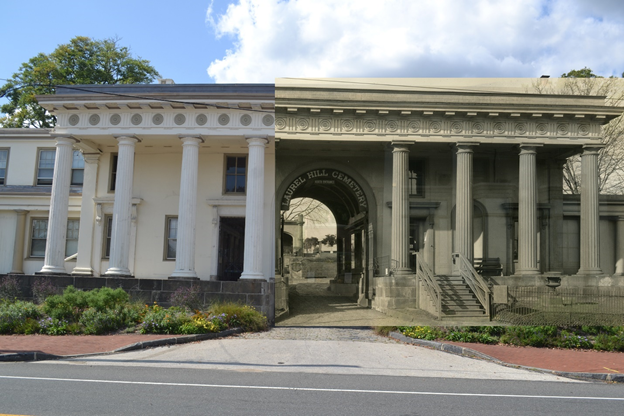
The Gatehouse at Laurel Hill East was designed in 1836 by Scottish architect, John Notman, and built that same year. John Notman outbid William Strickland and Thomas Ustick Walter for this commission. The Gatehouse saw several additions throughout the years, but the photograph used above was taken in 1916. The entrance to the office was accessible right on Ridge Avenue, while today, visitors must go through the arched gateway and turn right for the door.
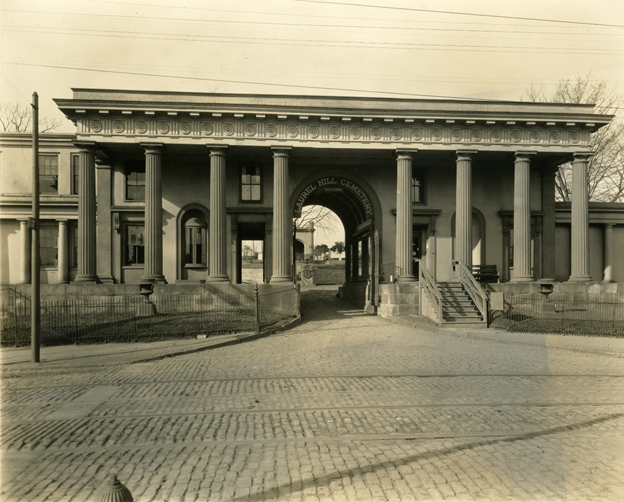
The photograph below from 1964 shows how marble weathers over time, when compared to the two on the left, in the current day shot. Because of its beauty and extreme malleability, marble was used frequently in Victorian cemeteries. Philadelphia, and especially nearer to Laurel Hill in Manayunk and along the river, contained so many factories that air pollution and acid rain have taken its toll on our marble headstones.
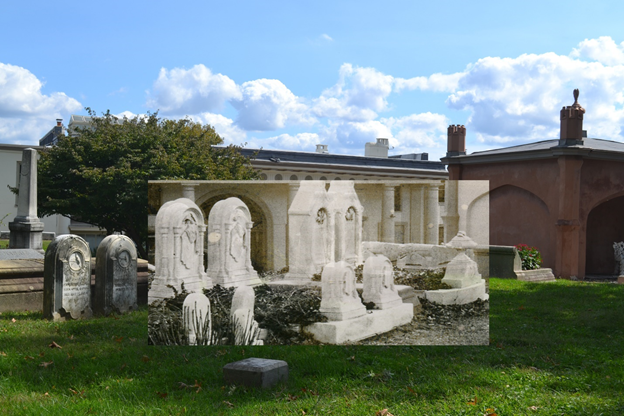
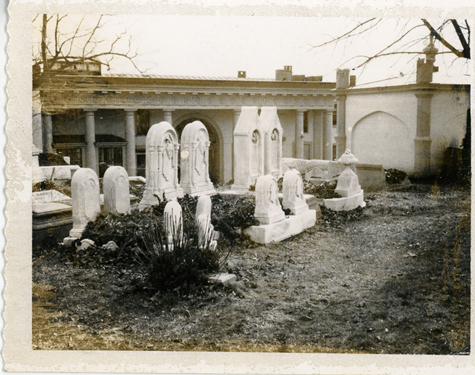
The undated image below from a stereoscope card puts ghosts from the past back in the cemetery at our Old Mortality statue grouping. The structure incasing these statues was built in 1838 and they have been greeting visitors who walk into the courtyard ever since. It’s a wonder if the guests seen here would like the new rock garden that surrounds Old Mortality today?
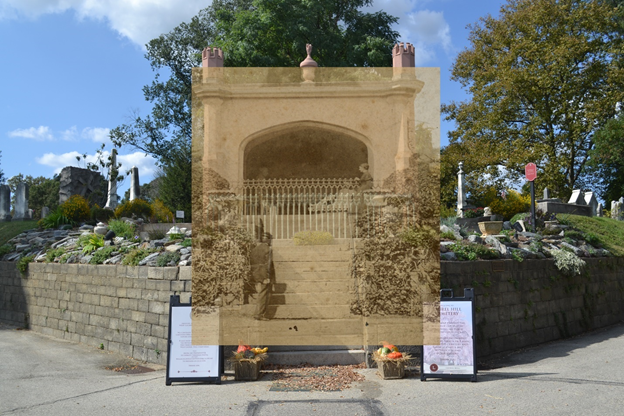
The original stereo card used for the “then and now” picture. When a stereo card was placed in a stereoscope and viewed, the picture became 3-dimensional.
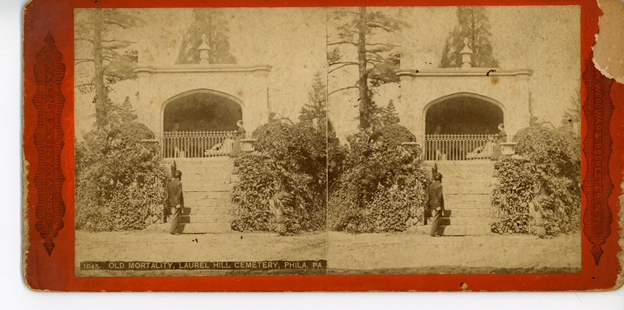
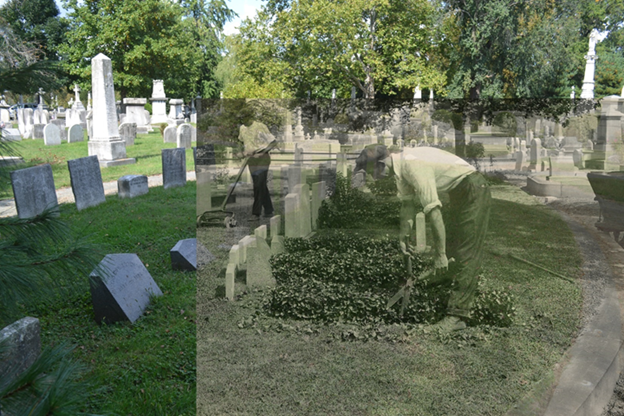
On October 21, 1836, Laurel Hill Cemetery buried its first permanent resident, Mercy Carlisle, in this lot.
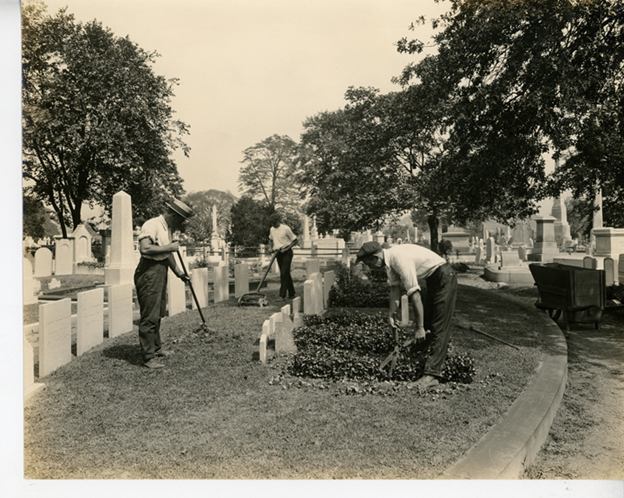
In 1917, two gardeners are tending to grass cutting and shaping the ivy on mounded graves in Mercy’s lot in the above image.
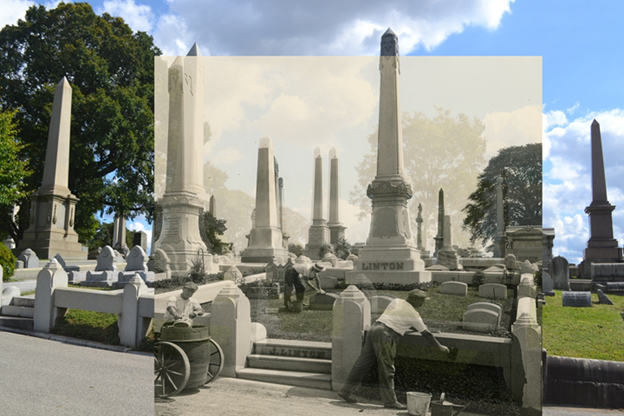
That same year, stone cleaners were hard at work in another area of the cemetery, cleaning the stonework on the Linton property.

And finally, again in 1917, a stone cutter works to inscribe the William Welsh stone while his colleague cleans another in the back.
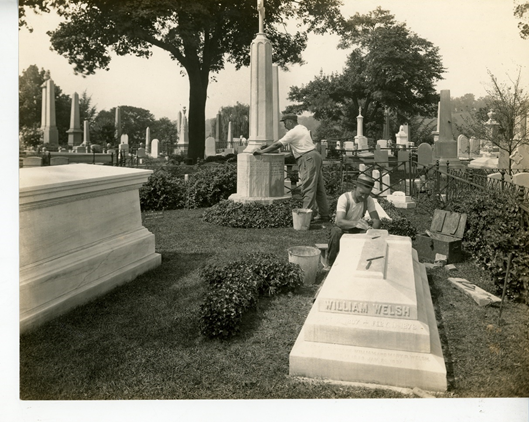
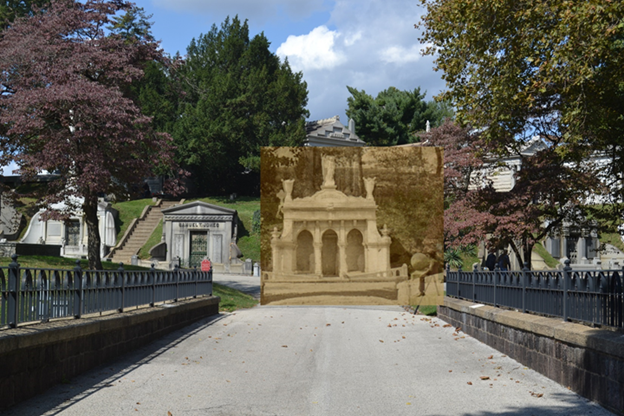
The Benson Mausoleum was the first to be built in Laurel Hill East’s Central section in 1868. In this stereo card image, possibly from 1876, a young man sits on the bridge that connects Central and South Laurel Hill, gazing at this beautiful structure, which, at the time, stood alone along Millionaire’s Row.
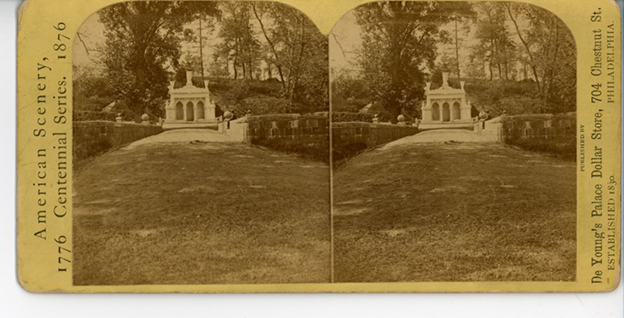

And lastly, we see the Receiving Vault at Laurel Hill East, which hasn’t changed much, to be honest, and a small glimpse of a perfectly manicured portion of South Laurel Hill Cemetery.
The Receiving Vault was used to store bodies when the ground was frozen in the winters and could not be dug by hand or while a family was waiting for their mausoleum or underground crypt to be built.

Do you have any old family photographs taken somewhere you know? Use this website source “The Craft of Then and Now Photography” to create your own!
If you would like to support the archives at Laurel Hill East & Laurel Hill West Cemeteries, consider donating to the Archives Preservation Fund. Donations are used to purchase archival quality housing and other preservation materials.